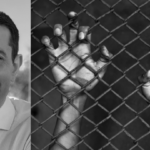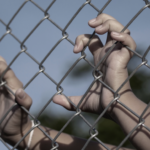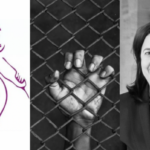Youth Crime: Prevention and Diversion Produce Better Outcomes than Punitive Measures

Australian federal, state and territory governments have in recent years passed a range of laws which take an increasingly punitive approach to youth crime – a populist approach which focuses on incarcerating troubled youths in detention centres rather than addressing the underlying factors that contribute to offending conduct and diverting them away from the criminal justice system.
In the face of the vast body of research that has overwhelming found that investing resources into housing, mental and physical health, community programs and other support services, and adopting measures which divert troubled youths away from the criminal justice system produces far better outcomes then punishment when it comes to reducing offending in the longer term, politicians and the mainstream media have propagated the populist view that ‘locking up more kids’ is not only necessary, but beneficial to society – implementing expanded detention powers, harsher youth bail laws, ‘adult crime adult time’ and other harsh sentencing regimes, whilst at the same time reducing funding to prevention and support initiatives and cancelling successful diversionary programs.
Recent Incident Triggers Calls for More Punitive Measures
On 6 September 2025, 15-year old Dau Akueng and 12-year old Chol Achiek were walking home from a game of basketball in the West Melbourne suburb of Cobblebank when they were allegedly approached by a group of masked males armed with machetes and long edged weapons, who stabbed them to death.
Seven males were arrested on 19 September 2025 over the alleged attack – three adults, two of whom are aged 19 and one aged 18 – and four youths, three of whom are aged 16 and one aged 15.
All seven have been charged with murder and remanded in custody to face court.
The senseless attack has triggered calls by politicians and the mainstream media for tougher laws against both the possession of machetes and youth offending, with impassioned pleas by callers to radio shows and countless posts on social media.
But while such appalling incidents have a catastrophic impact on families of the loved-ones and can shake communities to their core, the evidence is that imposing increasing more punitive measures against youth crime – and crime generally – does not make communities safer in the longer term.
Punitive Approach is Incarcerating More Kids Without Long Term Solutions
A recent report by the New South Wales Bureau of Crime Statistics and Research (BOCSAR) suggests that the punitive regimes adopted by the state government has caused a spike in youth detention – pulling troubled youths further into the cycle of crime as evidenced by increased reoffending rates – while not having a measurable impact on already-declining overall youth crime rates.
Rising detention despite crime having been on decline for many years before recent punitive measures
-
- In NSW, youth custody rates have surged. As of June 2025, 234 young people were held in detention, a 34% increase compared with two years prior.
- The majority—around three out of four—were on remand, awaiting trial, not yet convicted. This suggests tougher bail laws are swelling custody numbers rather than spikes in youth offending.
Figure 1. Youth in Custody in NSW (June Snapshots)
Source: NSW Bureau of Crime Statistics and Research (BOCSAR), DCJ NSW
High reoffending rates after detention
-
- Youths who are detained are significantly more likely to reoffend upon release than those given community-based alternatives. A BOCSAR study found that over half of young people leaving detention reoffended within a year, compared to far lower rates for diverted peers.
Disproportionate impact on Aboriginal young people
-
- One of the most troubling aspects of punitive laws is their disproportionate impact on Aboriginal young people. Despite representing less than 8% of the youth population, Aboriginal youth make up roughly 60% of the detention population in NSW. This stark reality underscores how punitive laws can amplify systemic inequalities rather than resolve them.
Aboriginal Overrepresentation in NSW Youth Detention
Source: BOCSAR/DCJ NSW, 2025 Custody Statistics
Wasted resources
-
- Detention costs taxpayers over $1,800 per child per day in NSW. Prevention and diversion programs often deliver better outcomes at a fraction of the cost.
NSW Incidents: Punitive Instinct vs. Preventive Needs
- Oran Park Home Invasions (2024): A spate of youth-linked home invasions and carjackings drew fierce political responses, with calls for mandatory sentences. Yet, police intelligence revealed a small number of repeat youth offenders, most with histories of family violence and school disengagement. Preventive interventions—if applied earlier—might have disrupted their trajectory.
- Newcastle “Youth Crime Spike” (2023): Several violent robberies led to sensational headlines, but BOCSAR figures showed overall youth offending was stable. The bigger trend was an increase in bail refusals, sending more youth into remand.
- Western Sydney Knife Offences (2024): Knife-related assaults in Blacktown and Parramatta triggered proposals for expanded stop-and-search powers. Yet international evidence suggests punitive knife laws rarely deter carrying. Local mentoring and cultural reconnection programs, however, have successfully reduced weapon-related behaviour among young people.
Prevention and Diversion Programs Work
Despite the trend towards punitive measures, NSW has pioneered effective prevention and diversion initiatives:
- Youth On Track (Coffs Harbour, Grafton, Dubbo, and more)
- Helps 10–17 year olds at risk of entering the justice system. Evaluations show reduced offending, stronger family ties, and renewed school engagement.
- Youth Koori Court (Sydney & Parramatta)
- A culturally responsive justice model with Aboriginal elders, producing reduced reoffending compared to mainstream courts.
- Police Cautioning & Youth Justice Conferences
- Allow restorative justice pathways. Yet, the proportion of young people diverted has declined in recent years:
- Youth Opportunities Grants
- In 2025, NSW invested more than $800,000 in 16 youth-led projects, building resilience and leadership in communities.
New South Wales prevention and diversion programs have proven to enhance community safety and promote better communities by:
- Lowering reoffending: Diversion reduces the likelihood of reoffending by half compared to formal court outcomes.
- Keeping young people in school and leading to higher employment rates: Education and employment are the strongest protective factors against crime.
- Promoting culturally responsive justice: Programs like the Youth Koori Court rebuild trust with Aboriginal communities.
- Addressing the root causes of crime: Prevention tackles poverty, housing, trauma, and addiction—factors no jail term can fix.
- Saving taxpayer money: Money saved on detention can be reinvested into community programs that prevent future crime. https://www.sydneycriminallawyers.com.au/app/uploads/2017/05/sarah-hopkins.jpg
Diversion Rates for Young Offenders in NSW
Source: BOCSAR, NSW Crime Statistics (2024 update)
Diversion fell from 51.3% in 2022–23 to 46.8% in 2023–24, meaning fewer young people are given a second chance outside court.
Governments Need to Shift Policies Towards What Works
The evidence makes clear there needs to be a shift in policy direction when it comes to addressing youth crime. This may involve:
- Review bail and remand laws to prevent unnecessary detention.
- Re-expand police diversion powers to restore earlier pathways out of court.
- Invest sustainably in prevention, ensuring stability for frontline youth organisations.
- Prioritise Indigenous-led programs, building on the success of Youth Koori Courts and Aboriginal-controlled services.
- Evaluate rigorously with a view to implementing and investing in measures that work and de-emphasising those that do not.
The grief of those victimised by youth crime is very real, and demands for action are understandable. But the vast body of research over many years makes clear that while adopting punitive measures may win votes and satisfy mainstream media shock jocks, it is not a solution to making our communities safer in the longer term.
By contrast, prevention and diversion programs have consistently led to reduced rates of reoffending and youth offending generally, by addressing underlying causes of crime and steering troubled youths away from the cycle of criminality.






